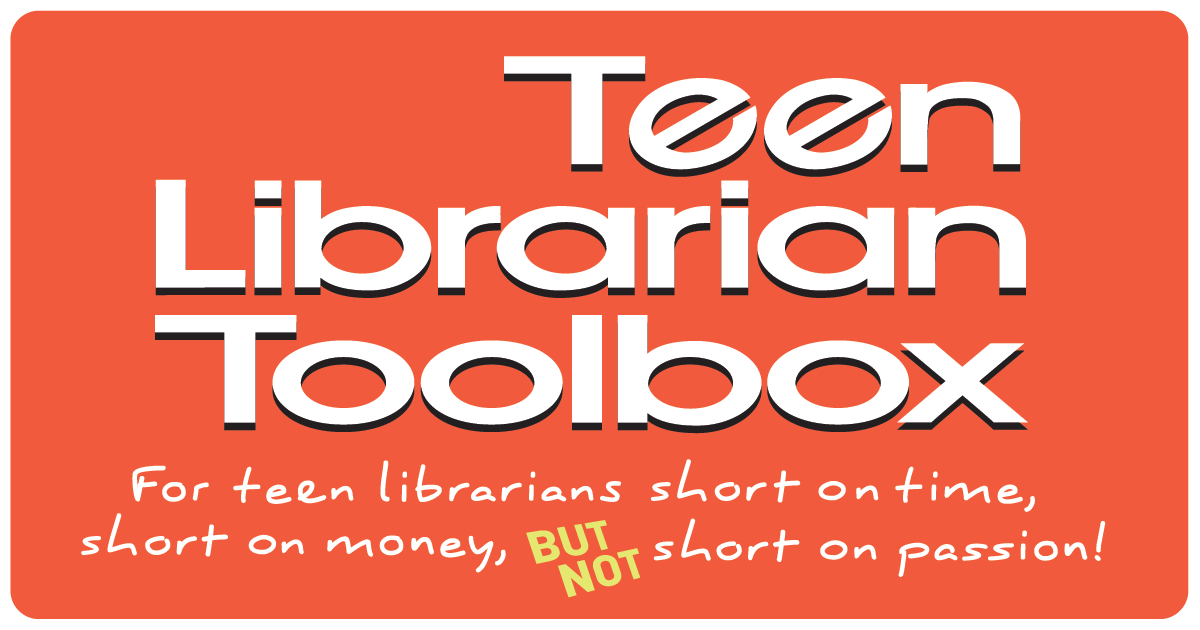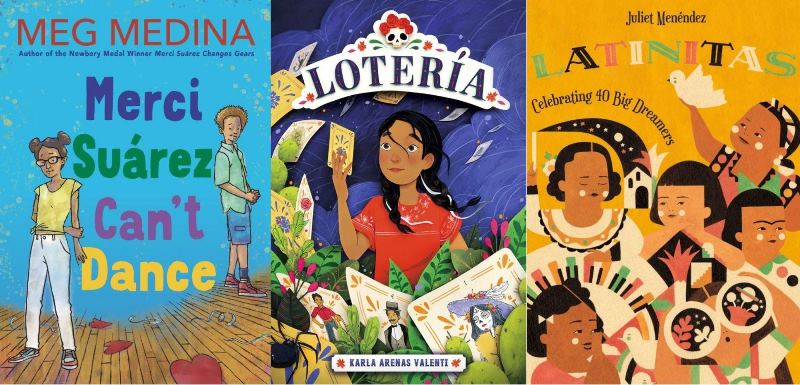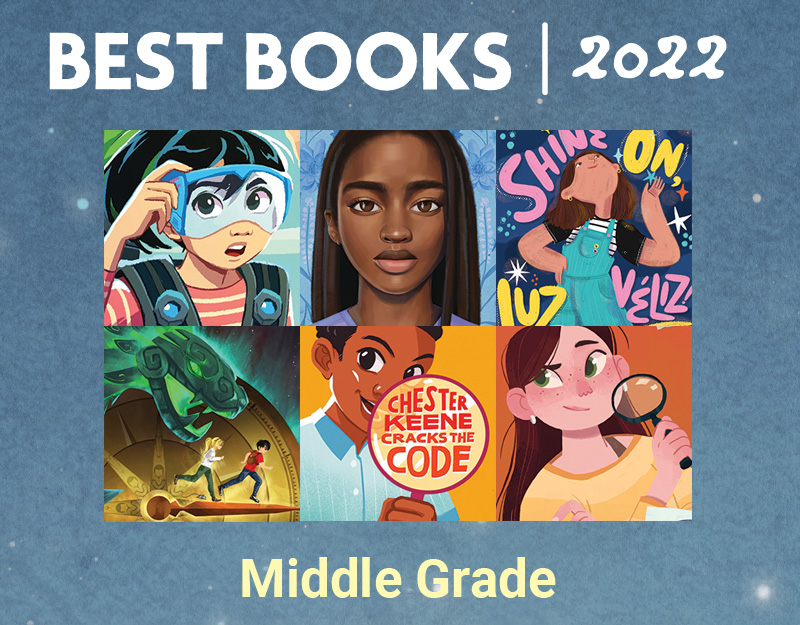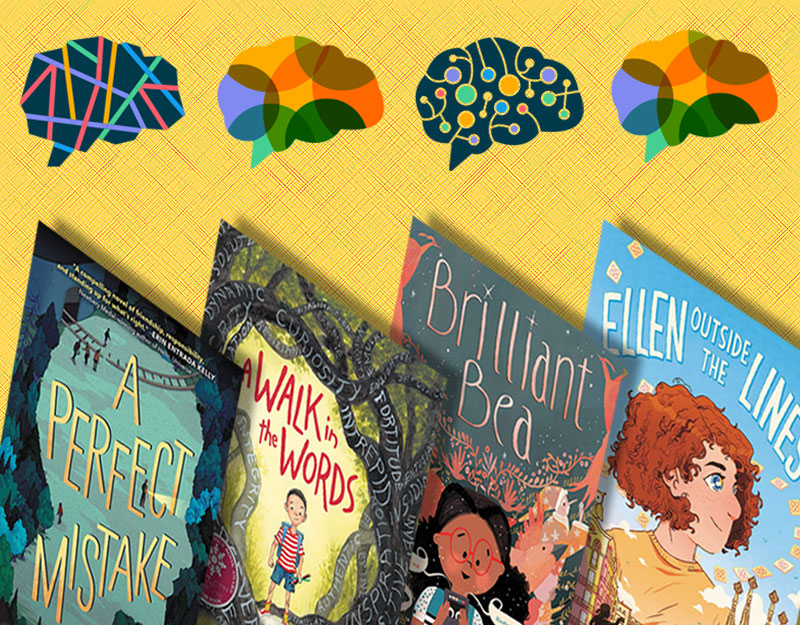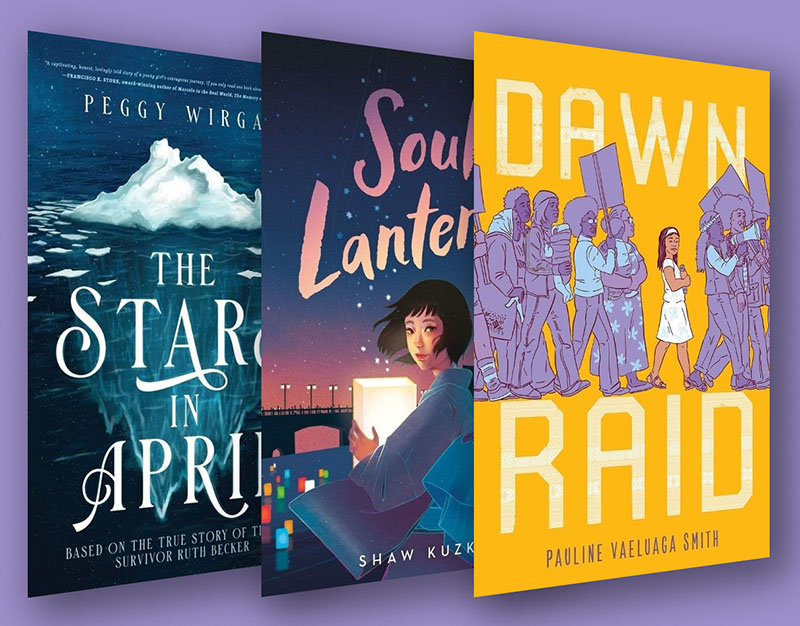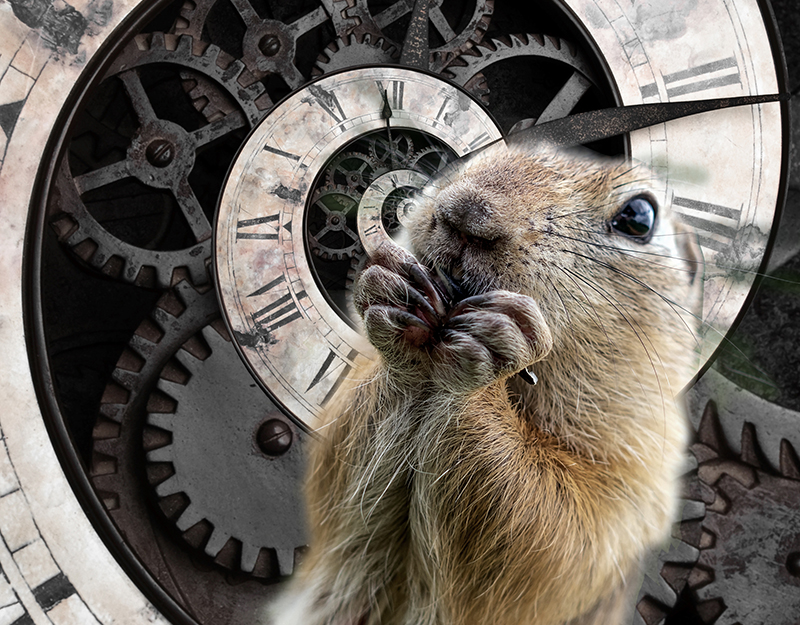Copycats and Conflict in The Cardboard Kingdom, a guest post by Chad Sell

“Imitation is not just the sincerest form of flattery – it’s the sincerest form of learning.” ― George Bernard Shaw
I learned to draw by copying from my favorite comic books, trying to understand each hero’s pose, their expression, and how their muscles fit together under all that spandex. (Superheroes have soooo many muscles!)
I think that we all learn that way. How to act, how to dress, how to move through the world. You see someone doing something amazing, and you try your best to do it the same way. It’s only natural, right? So why does it feel so bad being called a copycat?
ADVERTISEMENT
ADVERTISEMENT
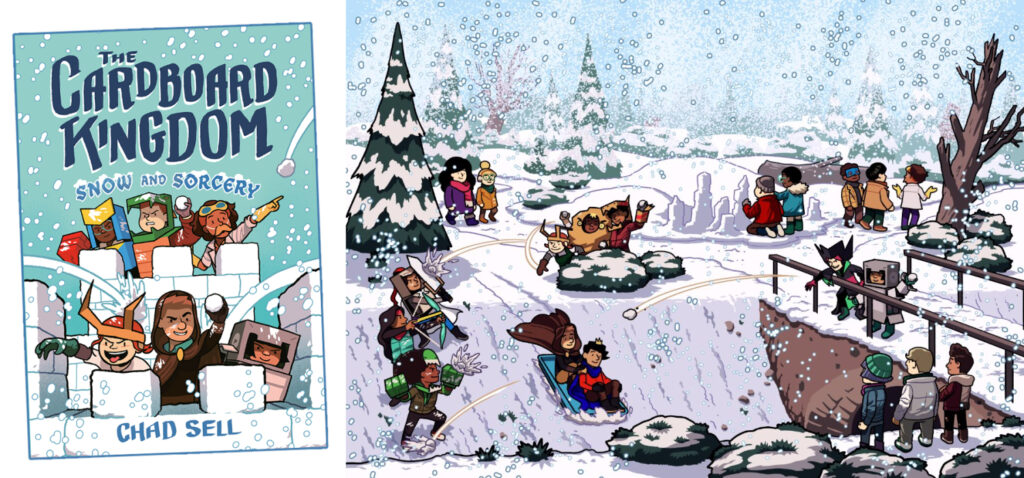
My new book The Cardboard Kingdom: Snow & Sorcery came out in early November. It’s the third book in a series that I’ve written with a total of eleven different writers, and we’ve always tried to create a wide-reaching, inclusive world where each child in the kingdom can express themselves with homemade costumes and creativity. In Snow & Sorcery, that sense of play and adventure inspires kids from the nearby neighborhood of Parkside to join in the fun. But things do NOT go well.
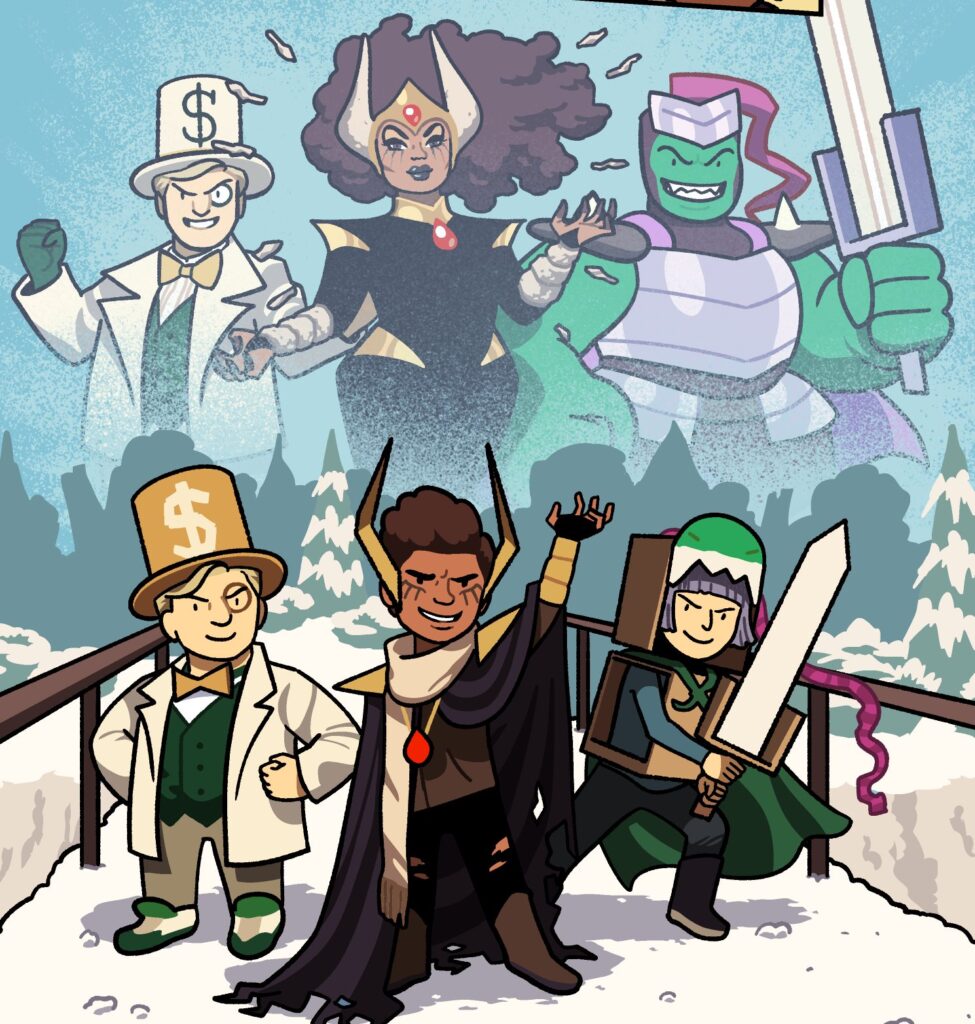
When Mr. Millionaire waves a hand drawn “million-dollar bill” to prove he really is a millionaire, Alice the Alchemist calls him a counterfeiter and a crook. She is a hard-working young entrepreneur, and she’s offended by his fakery.
When Jack the Sorceress sees Nando the Necromancer show up in a cool costume with snazzy eye makeup, Jack asks, “You’re a BOY dressing up as a dark magic diva?!” But, he says, “That’s MY thing!”
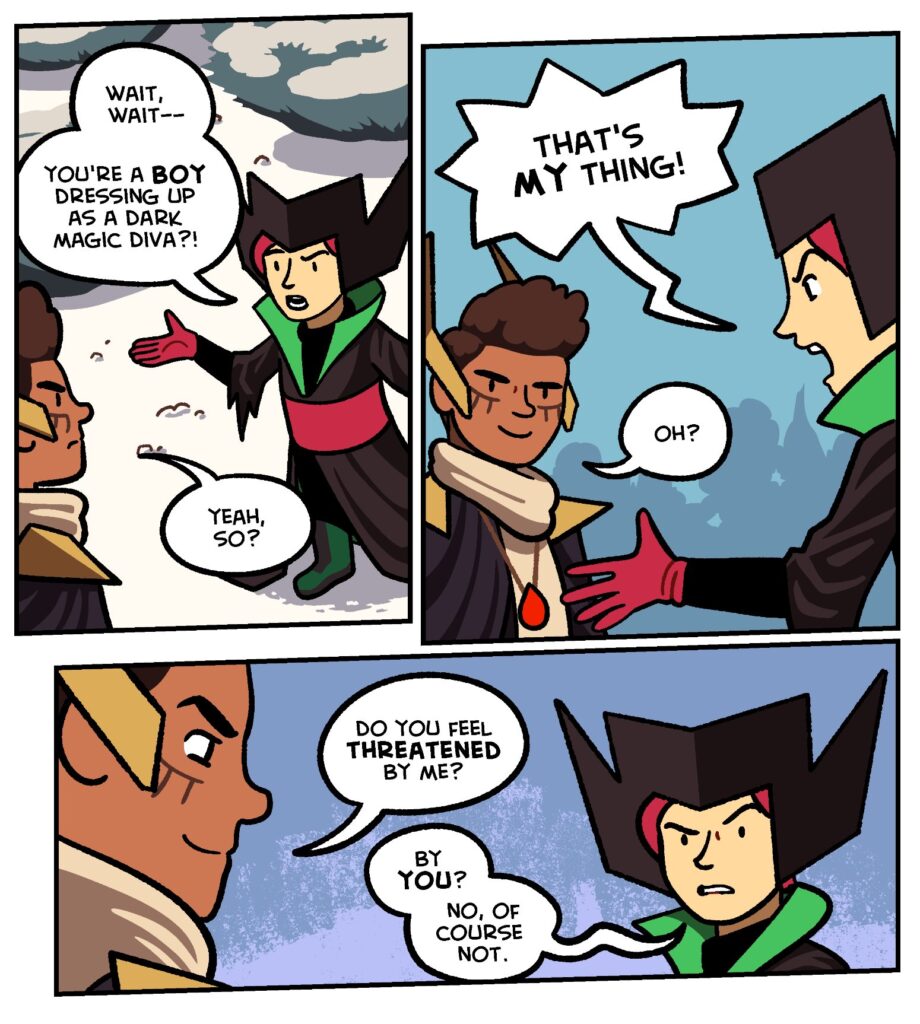
And then there’s the Copycat, who wears a mish-mash of costume parts that she’s proudly copied from other Cardboard Kingdom kids.
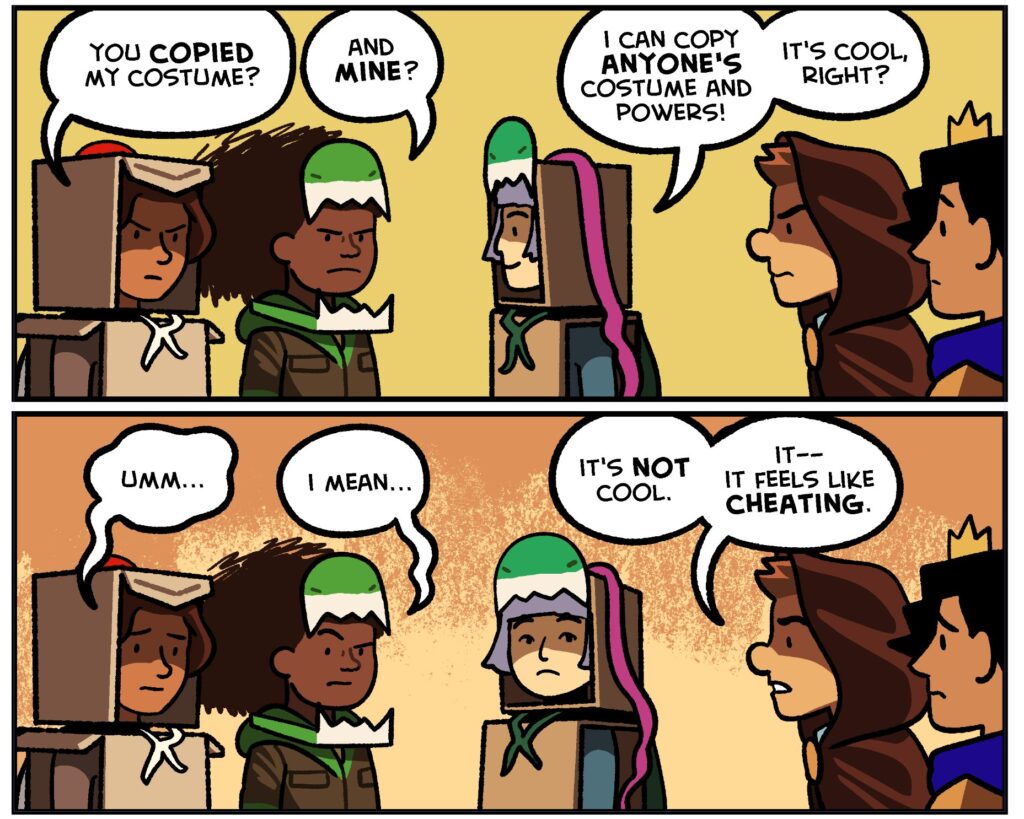
Needless to say, the new kids from Parkside are not warmly welcomed into the Cardboard Kingdom, setting up a string of misunderstandings and conflicts that will escalate over the course of the book.
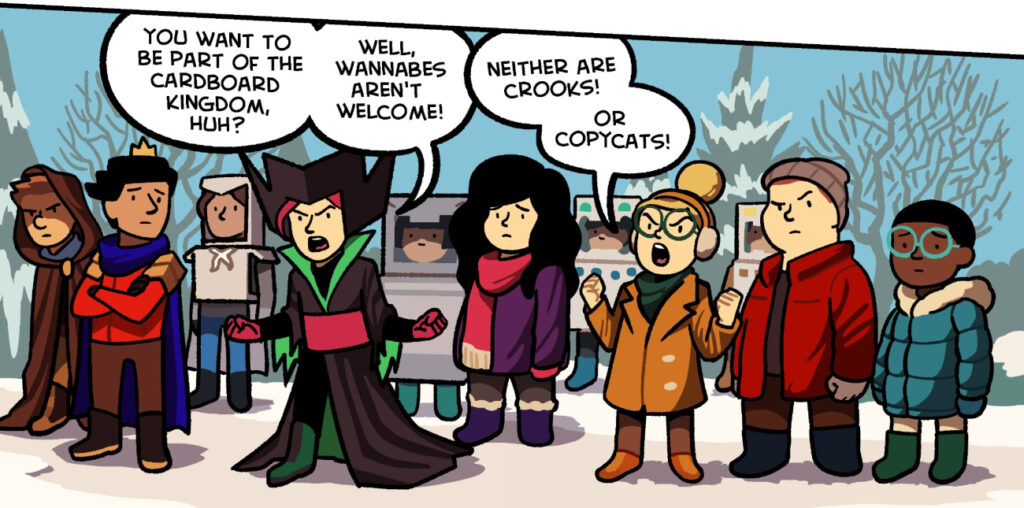
As I developed the stories of Snow & Sorcery with members on my writing team, we kept circling around the same questions: Why is it so uncomfortable seeing ourselves reflected in others? When is it okay to be a copycat? How inclusive and expansive can the Cardboard Kingdom really be?
I like to ask a lot of questions with my work, and I don’t claim to come up with answers for all of them. But here’s some of what I’ve learned while working on Snow & Sorcery.
What we fear in the mirror:
We all have faces. They’re awkward, expressive things that we use to interact with those around us: to talk, to display emotion, to interpret the feelings of others. But there’s this strange, uncanny thing about faces: you can never really know what yours looks like. You can look into a mirror, which certainly helps, but you can never actually know how everyone else sees you. Not unless they show you.
I think that the fundamental horror of being mimicked, imitated, or caricatured is discovering something ugly about ourselves that we hadn’t seen before. It can lead to anxiety and insecurity, the fear of ridicule or even replacement.
That’s what drives Jack the Sorceress to see Nando the Necromancer as a rival rather than a new friend. Later in the book, Jack explains that to Nando:
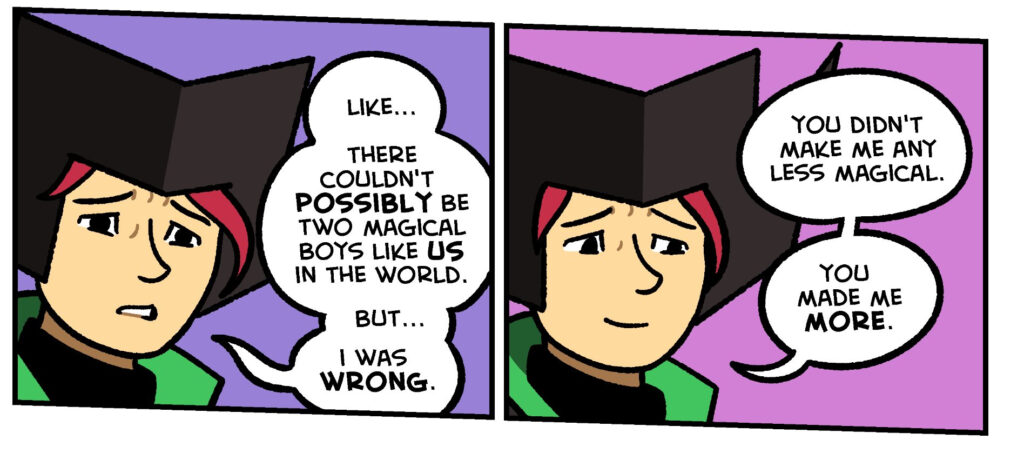
If we’re insecure about ourselves or our place in the world, seeing someone else like us can feel threatening, as if they’re going to steal whatever spot we’ve carved out for ourselves. Worse yet, if they show us something about ourselves that we don’t like, we’ve got to either adjust our own self-image or deny reality.
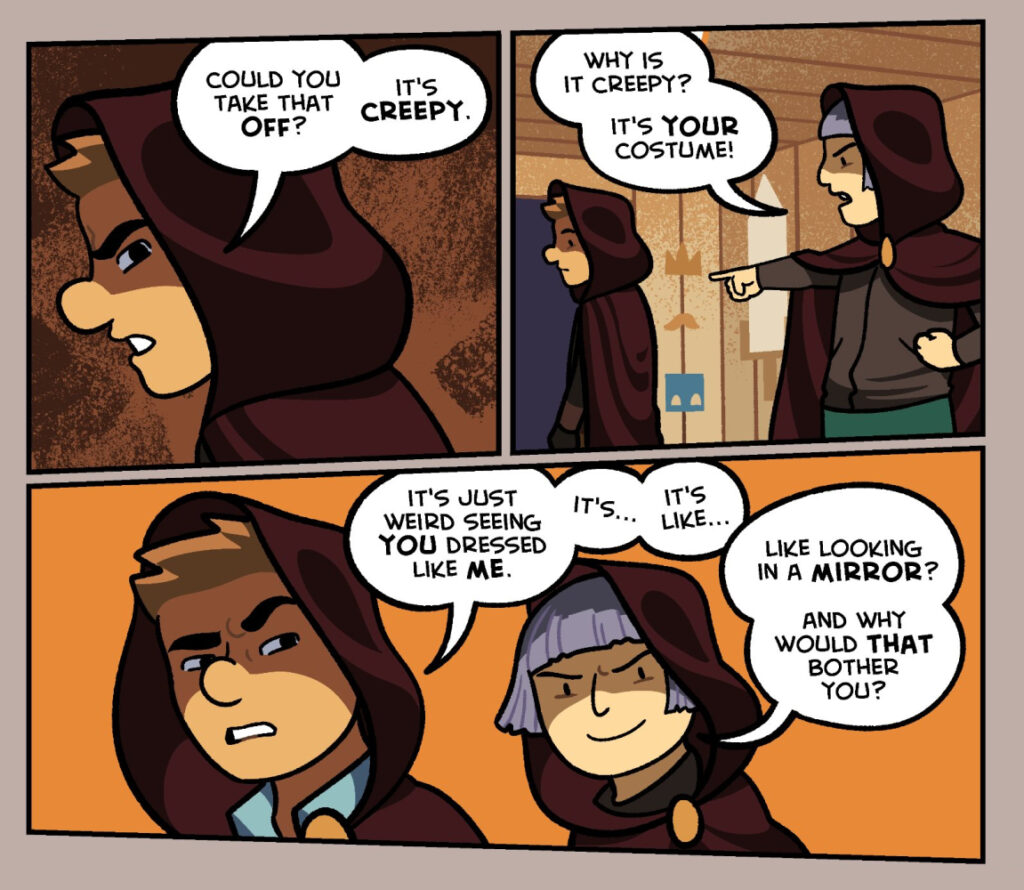
Imitation and caricature are powerful things. They can be hilarious and insightful, or they can be absolutely devastating–even unintentionally so. As an artist, I hesitate whenever someone asks me to draw a likeness of them. Capturing a likeness means identifying someone’s most distinctive traits, what sets them apart, but those specific things are often what they’re the most insecure about. Even with the best of intentions and the lightest touch, it’s a challenge. Whenever another artist draws me, I brace myself before looking at their work! (Insecurity apparently has no age limit or expiration date.)
The power of a costume:
At its heart, The Cardboard Kingdom is a kind of pastiche, an homage to all the superhero, fantasy, and science fiction stories that have inspired me and the entire creative team. It’s an exploration of how we project our favorite imaginary worlds onto our everyday lives, using a cardboard costume to transform into a towering robot or an enchanting sorceress. There’s something incredible about copying, about costumes, and about creativity.
In The Cardboard Kingdom, each child’s costume provides an opportunity to cosplay as a different character, but it also provides an option to try on a different personality for a while, to test drive a different aspect of themselves they might not be ready to deal with outside of it. Jack feels much more confident and powerful when in costume as the Sorceress, and he gradually learns to feel a bit more of that magic at school and at home.
The Copycat prides herself on her costuming craftsmanship, eagerly copying the cardboard pieces of everyone else’s outfits. It’s a skill she develops alongside her mimicry, as a means of fitting in.
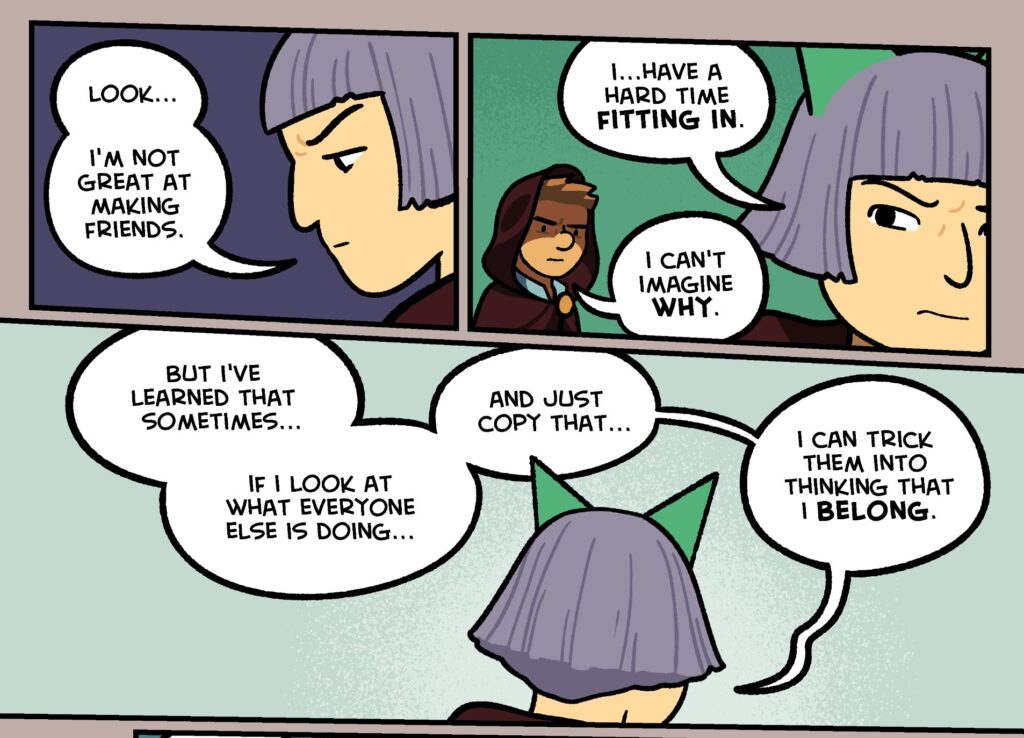
As George Bernard Shaw’s quote conveyed at the start of this article, copying is about learning. It’s a kind of rehearsal, trying to learn through repeating what you see, faking it til’ you make it.
People say that I have a distinctive illustration style, that they can tell from just a quick glance at a book’s cover that I drew it. But I don’t really know what that style is. It’s like my own face: it’s too much a part of me to get a proper look at. My artistic style only took shape after countless times copying and being inspired by others’ art, and somewhere along the way, it became uniquely mine.
ADVERTISEMENT
ADVERTISEMENT
And now I have the distinct pleasure of seeing readers copy costumes from our book, dressing up as Jack the Sorceress or Seth the Gargoyle for Halloween. It’s profound and inspiring to see the reverberations of your own creative work ripple out into the world, to see glimmering reflections of it shine back at you. And I hope it’s just as powerful for those kids to see themselves reflected in our book, to read characters that look and act just like them.
There are a lot of lessons to learn from copycats.
Meet the author
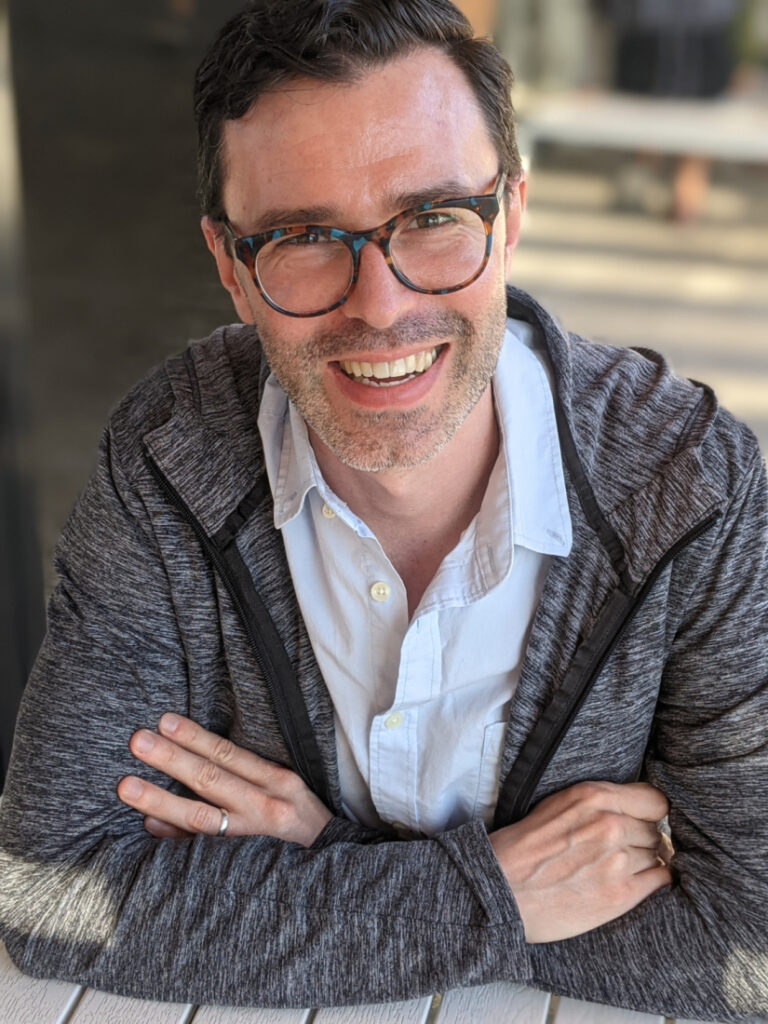
Chad Sell grew up in a small town in central Wisconsin. He lived in a neighborhood much like the Cardboard Kingdom, where he and his friends bounded through backyards in imaginative games and outfits! His favorite characters to play were the villains because, despite being different and misunderstood, they were powerful and confident, and they got the best costumes. Chad lives in Connecticut with his husband and cat. Chad’s other books include Doodleville and The Stupendous Switcheroo.
About The Cardboard Kingdom #3: Snow and Sorcery
The kids of the Cardboard Kingdom go on a new adventure! This time, they are in search of new friends—but what they discover is a lot more like enemies…
It’s winter break in the Cardboard Kingdom, and kids from the town across the park want to play together! But according to the evil Sorceress, not just anyone can join the kingdom… So it’s not long before the two communities spiral into battle.
Will the Sorceress realize the error of her ways before all hope is lost? Will friendship still manage to win the day?
The Cardboard Kingdom: Snow and Sorcery was created, organized, and drawn by Chad Sell with writing from seven other authors: Jay Fuller-Ng, David DeMeo, Katie Schenkel, Vid Alliger, Manuel Betancourt, Barbara Perez Marquez, and Jasmine Walls.
ISBN-13: 9780593481639
Publisher: Random House Children’s Books
Publication date: 11/07/2023
Series: Cardboard Kingdom Series #3
Age Range: 9 – 12 Years
Filed under: Guest Post
About Amanda MacGregor
Amanda MacGregor works in an elementary library, loves dogs, and can be found on Twitter @CiteSomething.
ADVERTISEMENT
ADVERTISEMENT
SLJ Blog Network
The Origins of THE WILD ROBOT with Peter Brown
Mac Barnett Sleighs
Kagurabachi, vol. 1 | Review
The Seven Bills That Will Safeguard the Future of School Librarianship
Gayle Forman Visits The Yarn!
ADVERTISEMENT

